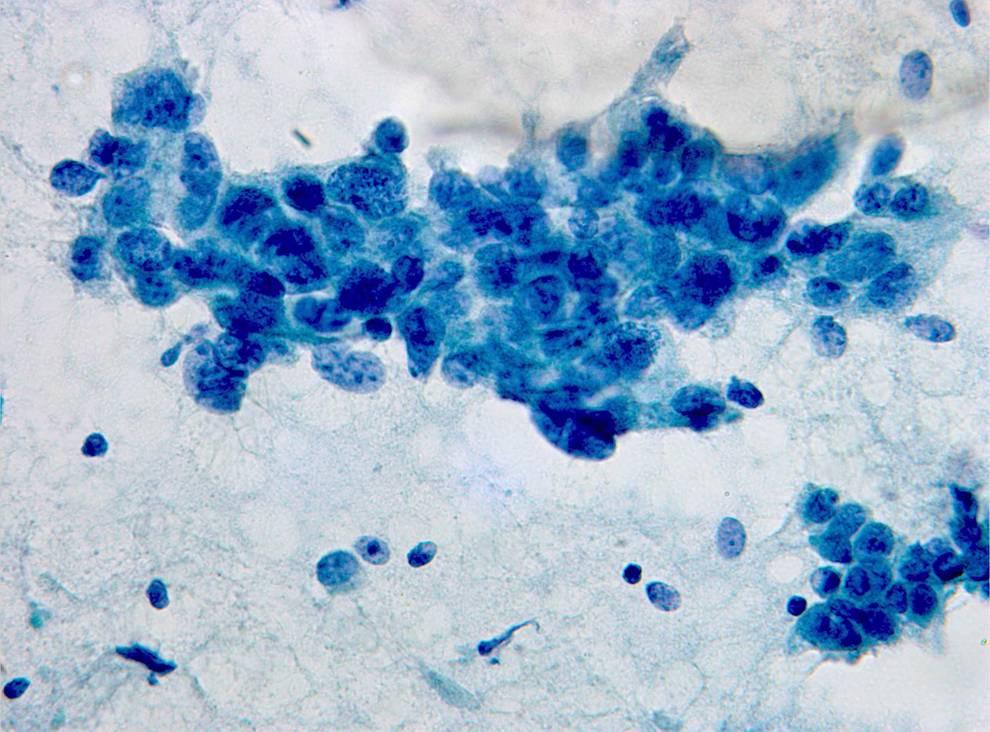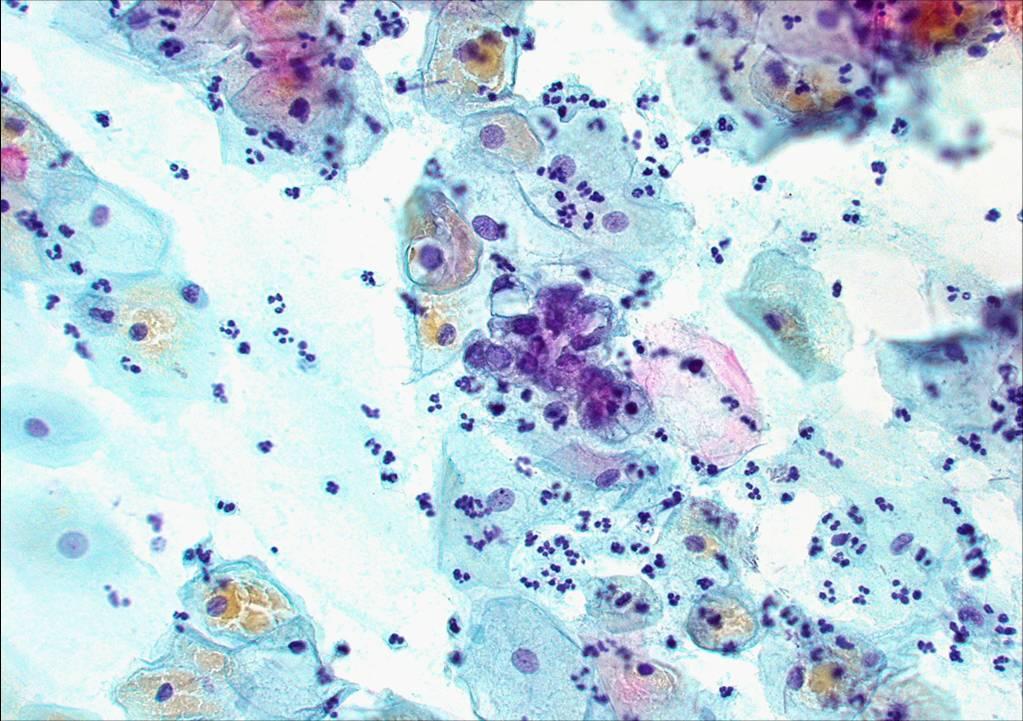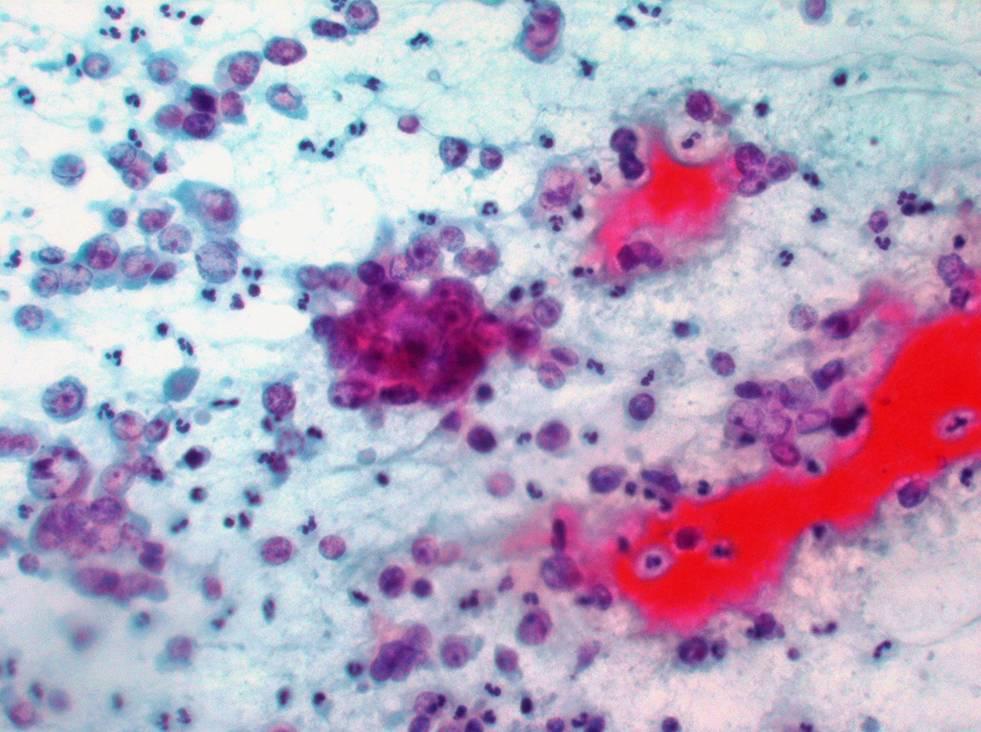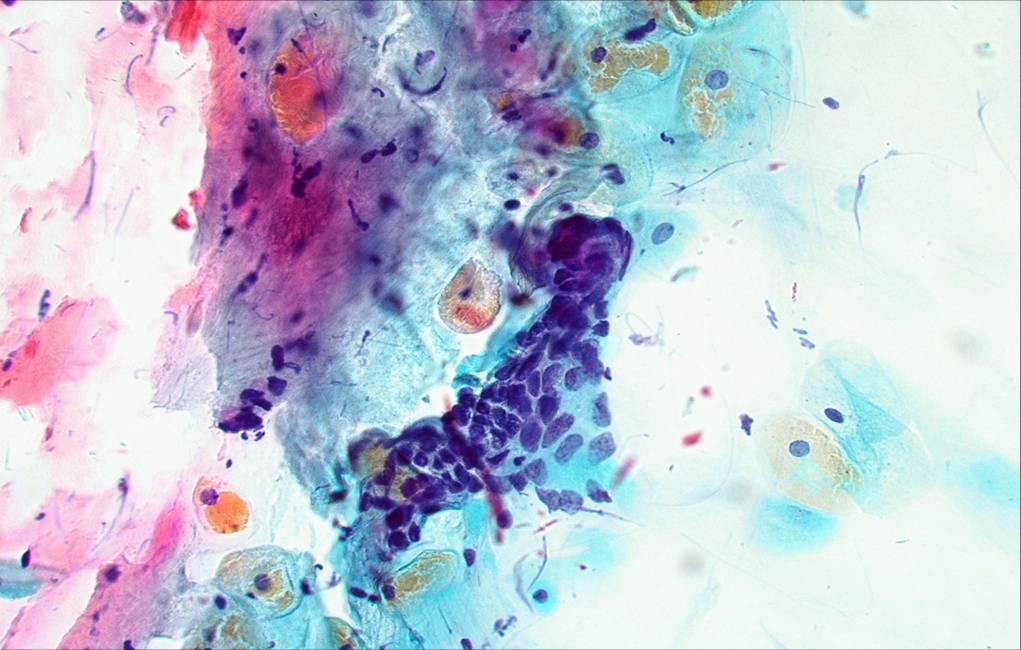This content is also available in:
Italiano
Español
Čeština
Magyar
Polski
Definition: A cytodiagnosis of atypical glandular cells should be made when endocervical or endometrial cells in the smear display a nuclear atypia that exceeds reactive or reparative changes but does not amount to adenocarcinoma.
Some examples are given in the following slides:






